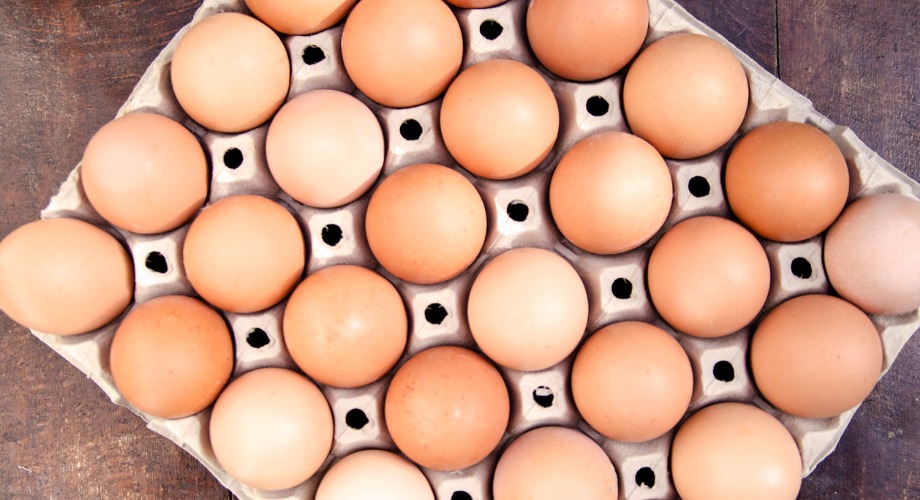When is a mutated virus a good thing? When the mutation could make flu shots more powerful.
Scientists at Scripps Research have found that a mutation called G186V could be a useful addition to the H3N2 influenza vaccine. As they reported in Cell Host & Microbe, preparing a seasonal flu vaccine with the G186V mutation may prevent a vexing problem that commonly occurs during the vaccine manufacturing process.
“This study gives us a roadmap to suggest how to improve the vaccine,” says Ian Wilson, D.Phil., Hansen Professor of Structural Biology at Scripps Research.
Wilson co-led the study with Chris K.P. Mok, PhD, of The University of Hong Kong and the First Affiliated Hospital of Guangzhou Medical University. Their work builds on a 2017 study that revealed that the common practice of growing the flu vaccine in eggs leads to a mutation called L194P, which keeps the vaccine from working as well as it should in humans.
For decades, vaccine manufacturers have made the flu vaccine by injecting influenza into chicken eggs. This is a relatively cheap way to allow the virus to replicate. Manufacturers then purify the fluid from the eggs to get enough of the virus to use in vaccines.
But this method comes with drawbacks.
“These are human viruses, and you’re growing them in an avian species,” says Wilson. Putting the virus in this challenging environment forces the virus to mutate to adapt and survive. “They’re acquiring mutations in order to grow better.”
As the virus mutates inside eggs, it becomes less like the viral strains circulating among the human population. A vaccine containing the L194P mutation is less likely to prompt the human immune system to recognize and attack the real virus. Wilson and his colleagues say this is one factor behind the low effectiveness of some seasonal flu vaccines in recent years.
For the new study, the researchers looked at other mutations that cropped up near the same site on the surface of the virus. Nicholas Wu, PhD, a research associate at Scripps Research, led the work to analyze mutations that appeared in the specific H3N2 strains selected for use in flu vaccines going back through the years.
Wu saw that the L194P and G186V mutations were very common in the egg-grown virus. Both of these mutations are well-known in the field for helping the virus grow in eggs, but Wu realized that the two mutations never showed up in the same virus.
The scientists then tested a theory that the two mutations were in opposition. The team studied influenza’s structure and showed that L194P and G186V functionally compete around the receptor binding site on the virus surface. Whichever mutation occurred at that site first was there to stay and would prevent the other mutation from occurring.
“These two mutations are incompatible with each other,” says Wu.
But while L194P harmed the flu shot’s effectiveness, G186V did not. The scientists found that the immune system treats the G186V virus as if it were similar to the circulating human virus.
Wilson and Wu say it will be important for vaccine manufacturers to test for these two mutations and select for H3N2 strains that contain G186V, before growing up the vaccine strains into eggs.
Going forward, the team hopes to screen influenza for more mutations that occur during the egg manufacturing process and better understand how these mutations interact.
“It’s important to try to figure out how we can make the seasonal flu vaccine better, especially for H3N2 viruses,” says Wilson.
In addition to Wilson, Mok and Wu, authors of the study, “Preventing an Antigenically Disruptive Mutation in Egg-Based H3N2 Seasonal Influenza Vaccines by Mutational Incompatibility,” were Huibin Lv and Wilson W.S. Ng of The University of Hong Kong and the First Affiliated Hospital of Guangzhou Medical University; Andrew J. Thompson, Rameshwar U. Kadam, Chih-Wei Lin, Corwin M. Nycholat, Ryan McBride and James C. Paulson of Scripps Research; Douglas C. Wu of the University of Texas at Austin; and Weiwen Liang of the First Affiliated Hospital of Guangzhou Medical University.
The study was supported by the National Institutes of Health (grants R56 AI127371 and R01 AI114730); the Bill and Melinda Gates Foundation (grant OPP1170236 and a Post-Doctoral Fellowship in Global Health); the Research Grants Council of the Hong Kong Special Administrative Region, China (Ref: T11-705/14N); and Guangzhou Medical University High Level University Construction Project Funding.


